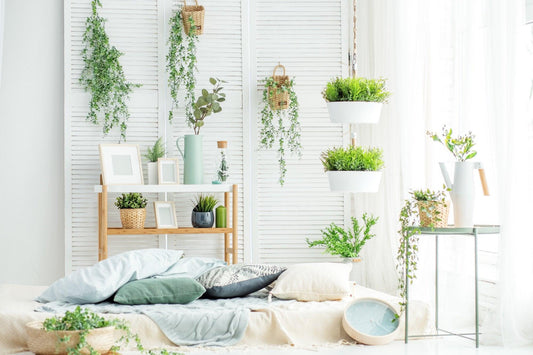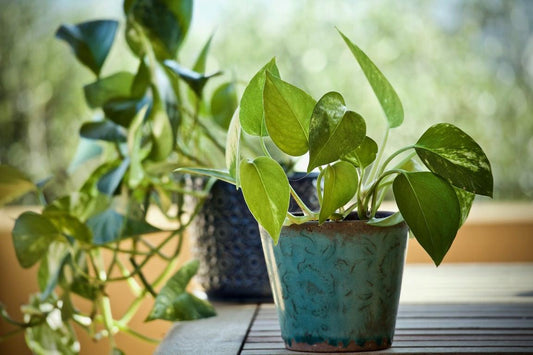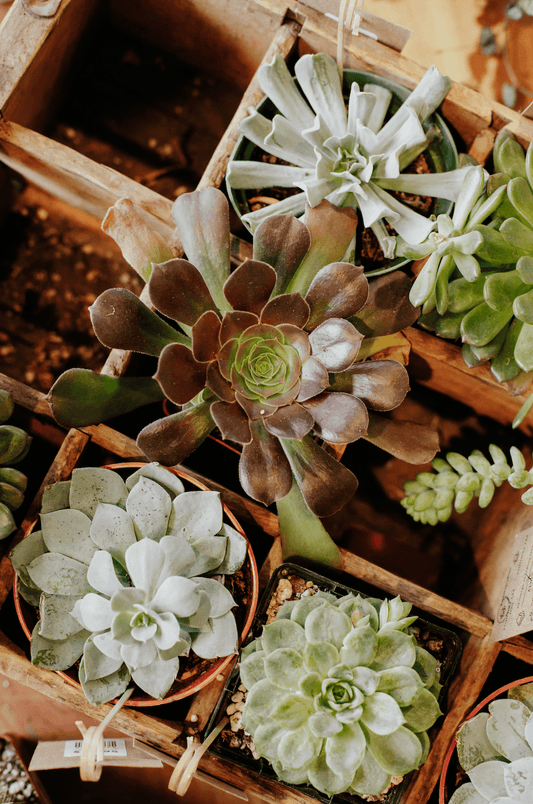PHILODENDRON
How to Care for PHILODENDRONS
Overview
These foliage plants are genuinely stunning and best known for their large, glossy, heart-shaped green leaves that give your indoor space plenty of character. Philodendrons come in two types: climbing/vining and upright/self-heading. The climbing types can grow up to several feet long and are best supported by a structure like a trellis or a post. Upright variants grow vertically and are great for pots and larger statement pieces. Philodendrons are fast growers, reaching up to 20 feet tall and 6 feet wide depending on the species, of which there are over 500.
Native to tropical rainforests, they do best in environments that can mimic their natural habitats. They are easy to care for, given how adaptable they are, being generally tolerant to low light, poor soil quality, and inconsistent watering schedules. They will be, for the most part, quite happy indoors but will appreciate being brought outside on occasion. It’s worth noting that they don’t experience a lot of stress when being moved from indoor to outdoor spots. If cared for properly, they can last you decades.


Profile
Philodendrons are easy to propagate using stem cuttings. Cut a 6-inch portion of the stem in between 2 nodes, and place it in water to develop roots. You can propagate using plantlets as well, but it’s best to be careful as division can be disruptive to the plant. Remove the plant from its pot, loosen the root ball, and pull the plantlet with its roots intact. Plant it in a fresh potting mix.
As they share similar properties, Philodendrons are often confused with Pothos plants. While they both can have heart-shaped leaves, Pothos plants have grooved stems and Philodendrons do not. Pothos also do not come with a leaf sheath, the enclosure where new leaves emerge from that Philodendrons have. They are, unfortunately, toxic to both pets and humans. Ingestion will result in swelling of the lips and tongue, as well as stomach problems with possible vomiting. To be safe, keep them away from your pets and kids.




Low light
Philodendrons thrive in medium to bright indirect light. They can survive low light conditions—some species do better than others—but they grow faster and produce more pronounced variegated leaves in higher light. Putting them in direct sunlight will burn the foliage. Basic humidity levels will do your plant well, but higher humidity levels will encourage better leaf growth. Keep temperature levels between 70-80°F. Anything below 55°F may harm them.

Occasional
Water when the top 50-75% of your soil is dry. Philodendrons like a moderate amount of moisture in their soil, with the upright varieties being more drought-tolerant than the climbing plants. Use filtered or distilled water to avoid exposing your plant to chlorine and fluorine from tap water.

Easy breezy
Philodendrons like loose, well-draining potting soil that is rich in organic matter. Container plants will require soil replacement every couple of years due to their sensitivity to the salts that accumulate due to watering. Watering all the way through the drainage holes will help, but the soil will need to be changed, eventually. When repotting, go up 1-2” in pot size.
FREQUENTLY ASKED QUESTIONS (FAQs)
on PHILODENDRON
When should I prune my Philodendron?
When your plant gets too long or leggy—especially the climbing types—simply cut back using pruning shears or scissors. Trim out any dead, damaged, or diseased leaves and stems when you see them.
What are the yellow splotches on my Philodendron’s leaves?
This is a possible sign of the mosaic virus. Isolate the infected plant and remove the affected leaves. Hose down the healthy ones to remove any dust on the surface and apply a nitrogen-rich fertilizer to help strengthen it.




